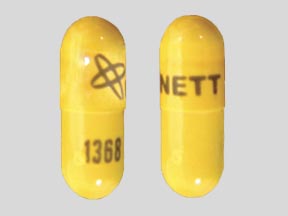Danazol Disease Interactions
There are 8 disease interactions with danazol.
- Abnormal uterine bleeding
- Androgen dependent tumors
- Hepatic dysfunction
- Impaired cardiac function
- Intracranial hypertension
- Porphyria
- Thromboembolic disease
- Volume overload/renal impairment
Danazol (applies to danazol) abnormal uterine bleeding
Major Potential Hazard, High plausibility.
The use of danazol is contraindicated in patients with undiagnosed, abnormal genital bleeding. Patients should be evaluated to ensure that neoplastic lesions are not present. Alterations of menstruation including irregular cycles, amenorrhea, breakthrough bleeding, and spotting have occurred during danazol therapy.
Danazol (applies to danazol) androgen dependent tumors
Major Potential Hazard, Moderate plausibility. Applicable conditions: Prostate Tumor
The use of danazol is contraindicated in patients with androgen- dependent tumors.
Danazol (applies to danazol) hepatic dysfunction
Major Potential Hazard, High plausibility. Applicable conditions: Liver Disease
The use of danazol is contraindicated in patients with severe hepatic impairment. Danazol is metabolized by the liver to inactive forms. Metabolic and therapeutic activity of danazol may be altered in patients with severe hepatic dysfunction. Elevated serum transaminase levels, peliosis hepatis and benign hepatic adenoma have occurred during chronic administration of danazol. Therapy with danazol should be administered cautiously in patients with or predisposed to hepatic dysfunction.
Danazol (applies to danazol) impaired cardiac function
Major Potential Hazard, Moderate plausibility. Applicable conditions: Heart Disease
Danazol is contraindicated in patients with marked impaired cardiac function.
Danazol (applies to danazol) intracranial hypertension
Major Potential Hazard, High plausibility.
Intracranial hypertension (pseudotumor cerebri) has occurred in patients receiving danazol. Therapy with danazol should be administered cautiously in patients with or predisposed to cerebral or papilledema and/or intracranial hypertension.
Danazol (applies to danazol) porphyria
Major Potential Hazard, High plausibility.
The use of danazol is contraindicated in patients with porphyria. Danazol can induce production of delta- aminolevulinic acid (ALA) synthetase activity resulting in porphyrin metabolism.
Danazol (applies to danazol) thromboembolic disease
Major Potential Hazard, Moderate plausibility. Applicable conditions: Bleeding, History - Thrombotic/Thromboembolic Disorder, Thrombotic/Thromboembolic Disorder
Danazol is contraindicated in patients with thrombosis or thromboembolic disease or a history of such events. Thromboembolism, thrombotic and thrombophlebitic events, including fatal strokes, have occurred during danazol therapy. Hematuria, menstrual spotting and thrombocytopenia have also occurred. Additionally, therapy with danazol should be administered cautiously in patients with or predisposed to bleeding/clotting disorders.
Danazol (applies to danazol) volume overload/renal impairment
Major Potential Hazard, High plausibility. Applicable conditions: Fluid Retention, Renal Dysfunction, Seizures, Diabetes Mellitus, Hypertension, Congestive Heart Failure, Migraine
Danazol possess androgenic activity that can result in salt and water retention. Danazol is eliminated by the kidney, and its use is contraindicated in patients with severe renal dysfunction. It should also be administered cautiously in patients adversely affected by volume overload, such as patients suffering from epilepsy, diabetes mellitus, migraine, cardiac or renal dysfunction, polycythemia and hypertension. These patients will require careful observation.
Switch to professional interaction data
Danazol drug interactions
There are 265 drug interactions with danazol.
Danazol alcohol/food interactions
There is 1 alcohol/food interaction with danazol.
More about danazol
- danazol consumer information
- Check interactions
- Compare alternatives
- Pricing & coupons
- Reviews (9)
- Drug images
- Side effects
- Dosage information
- During pregnancy
- Drug class: antigonadotropic agents
- En español
Related treatment guides
Drug Interaction Classification
| Highly clinically significant. Avoid combinations; the risk of the interaction outweighs the benefit. | |
| Moderately clinically significant. Usually avoid combinations; use it only under special circumstances. | |
| Minimally clinically significant. Minimize risk; assess risk and consider an alternative drug, take steps to circumvent the interaction risk and/or institute a monitoring plan. | |
| No interaction information available. |
See also:
Further information
Always consult your healthcare provider to ensure the information displayed on this page applies to your personal circumstances.


